Ricky C Welch
age ~50
from Dothan, AL
- Also known as:
-
- Ricky Chad Welch
- Ricky D Welch
- Rickey C Welch
- Rickey D Welch
- Chad R Welch
- Rickeys Welch
- Phone and address:
-
507 Devaughn St, Dothan, AL 36301
(334)7018315
Ricky Welch Phones & Addresses
- 507 Devaughn St, Dothan, AL 36301 • (334)7018315
- 927 Honeysuckle Rd, Dothan, AL 36305 • (334)7026759
- Ashford, AL
- Memphis, TN
- Cleveland, TN
Work
-
Company:Cal kraze yogurtFeb 2013
-
Position:Assistant manager
Education
-
School / High School:Alabama Aviation Center- Ozark, AL2011
-
Specialities:Certificate in Airframe and Powerplant Mechanic
Skills
Disassemble engines • and inspect pars such as turbine blades ... • wrapping • cracks • and leaks using precision measuring inst... • x-rays and manetic inspection equipment.... • hydraulic systems • and de-icers to locate cracks • breaks • leaks • or other problems. Conduct routine and ... • refuel • and change oil in line service aircraft.... • distortion • and invisible cracks in the fuselage • wings • and tail • using x-ray and magnetic equipment. Exam... • inspect • repair and install in-flight refueling s... • fits • and secure sections in place • using adhesives • hand tools • and power tools. Measure parts for w... • using precision instruments • Measure the tension of control cables. A... • using portable or stationary equipment. ... • and check them for contamination. Fabric... • using metal fabricating machines • saws • breaks • shears • and grinders.Clean • strip • prime and sand structural surfaces and m...
Resumes

Ricky Welch
view source
Ricky Welch
view source
Ricky Welch
view source
Ricky Welch Dothan, AL
view sourceWork:
Cal Kraze Yogurt
Feb 2013 to 2000
Assistant Manager Prowler Lites
Dothan, AL
Jan 1996 to Jan 2013
Radio Telemetry Specialist Applebee's
Dothan, AL
Nov 1994 to Jan 1996
Bar Back
Feb 2013 to 2000
Assistant Manager Prowler Lites
Dothan, AL
Jan 1996 to Jan 2013
Radio Telemetry Specialist Applebee's
Dothan, AL
Nov 1994 to Jan 1996
Bar Back
Education:
Alabama Aviation Center
Ozark, AL
2011 to 2012
Certificate in Airframe and Powerplant Mechanic Slocomb High School
Slocomb, AL
1990 to 1994
High School Diploma in General
Ozark, AL
2011 to 2012
Certificate in Airframe and Powerplant Mechanic Slocomb High School
Slocomb, AL
1990 to 1994
High School Diploma in General
Skills:
Disassemble engines, and inspect pars such as turbine blades and cylinders for corrosion wear, wrapping, cracks, and leaks using precision measuring instruments, x-rays and manetic inspection equipment. Examine and inspect aircraft components including landing gear, hydraulic systems, and de-icers to locate cracks, breaks, leaks, or other problems. Conduct routine and special inspections as required by regulations. Clean, refuel, and change oil in line service aircraft. Check for corrosion, distortion, and invisible cracks in the fuselage, wings, and tail, using x-ray and magnetic equipment. Examine engines through specially designed openings while working from ladders or scaffolds or use hoists or lifts to remove the entire engine from an aircraft. Prepare and paint aircraft surfaces. Remove, inspect, repair and install in-flight refueling stores and external fuel tanks. Spread plastic film over areas to be repaired in order to prevent damage to surrounding areas. Trim and shape replacement body sections to specified sizes, fits, and secure sections in place, using adhesives, hand tools, and power tools. Measure parts for wear, using precision instruments, Measure the tension of control cables. Accompany aircraft on flights in order to make in-flight adjustments and corrections. Cure bonded structures, using portable or stationary equipment. Obtain fuel and oil samples, and check them for contamination. Fabricate defective sections or parts, using metal fabricating machines, saws, breaks, shears, and grinders.Clean, strip, prime and sand structural surfaces and materials to prepare them for bonding.
Googleplus

Ricky Welch
Work:
Capgemini - Project Co-Ordinator (2009)
Education:
Abraham Darby - N/A, Telford College of Arts & Technology - I.T
About:
Working at CapGemini full time as a Project Co-Ordinator and completing the Foundation Degree in Science.

Ricky Welch
Work:
Cal-Tex Citrus Juice, LP - CIP Sanitation Operator (Muggle Job)
Stages willing to have me! - Entertainment God!
Stages willing to have me! - Entertainment God!
Tagline:
“Be careful what you pretend to be because you are what you pretend to be.” - Kurt Vonnegut Jr.

Ricky Welch

Ricky Welch

Ricky Welch

Ricky Welch
Youtube
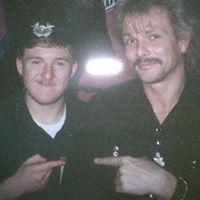
Ricky Welch
view source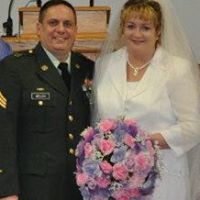
Ricky Welch
view source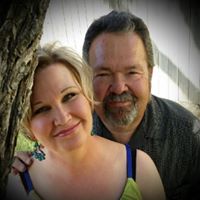
Ricky Welch
view source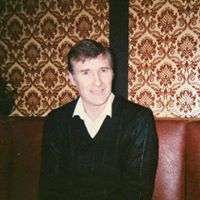
Ricky Welch
view source
Ricky Welch
view source
Ricky Welch
view source
Ricky J. Welch
view source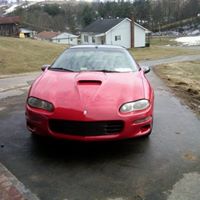
Ricky Welch
view sourceMyspace
Classmates

Ricky Welch
view sourceSchools:
McNair Sr High School Atlanta GA 1987-1991
Community:
Clolita Castleberry, Frederick Jinks

Ricky Welch
view sourceSchools:
Sierra Vista High School Tulare CA 1972-1976

Ricky Welch
view sourceSchools:
Cleveland Primary School Cleveland OK 1965-1965, Lamar Elementary School Pampa TX 1965-1965, Wright Elementary School Perryton TX 1966-1966, Rex Reeves Elementary School Canyon TX 1967-1968, South Lawn Elementary School Amarillo TX 1968-1969, Hiwasse Grade School Hiwasse AR 1969-1969, Canyon Junior High School Canyon TX 1971-1972, Pampa Junior High School Pampa TX 1972-1973, Pampa Middle School Pampa TX 1973-1974
Community:
Kim Miller, Johnnie Prout, James Glenn, Georgia Clifton, Carolyn Joseph, Leimomi Keoho

Ricky Welch
view sourceSchools:
Oberlin High School Oberlin LA 1974-1978
Community:
Michael Harmon, Beverly Williams, Tammy Bartell, Rita Vizena

Ricky Welch
view sourceSchools:
Southern Pines Elementary School Southern Pines NC 1976-1980
Community:
Mark Williams, Patti Baldwin, Elizabeth Turner, Joeli Jackson, Elizabeth Pardue

Rex Reeves Elementary Sch...
view sourceGraduates:
Kellye Covington (1968-1974),
Wendy Maynard (1972-1978),
Kenda Grant (1970-1972),
Ricky Welch (1965-1966)
Wendy Maynard (1972-1978),
Kenda Grant (1970-1972),
Ricky Welch (1965-1966)

South Lawn Elementary Sch...
view sourceGraduates:
Ricky Welch (1968-1969),
Kristi Reece (1968-1971),
Michael Pritchett (1979-1982),
Ryan Hazelwood (1981-1988),
Mark Marshall (1962-1969)
Kristi Reece (1968-1971),
Michael Pritchett (1979-1982),
Ryan Hazelwood (1981-1988),
Mark Marshall (1962-1969)

Pampa Junior High School,...
view sourceGraduates:
Ricky Welch (1972-1973),
Andrea Hubbard (1984-1985),
Mary Rodgers (1974-1976),
Becky Robinson (1965-1966),
Denise Deggs (1974-1975),
Charis Monroe (1961-1964)
Andrea Hubbard (1984-1985),
Mary Rodgers (1974-1976),
Becky Robinson (1965-1966),
Denise Deggs (1974-1975),
Charis Monroe (1961-1964)
Flickr
Get Report for Ricky C Welch from Dothan, AL, age ~50



















